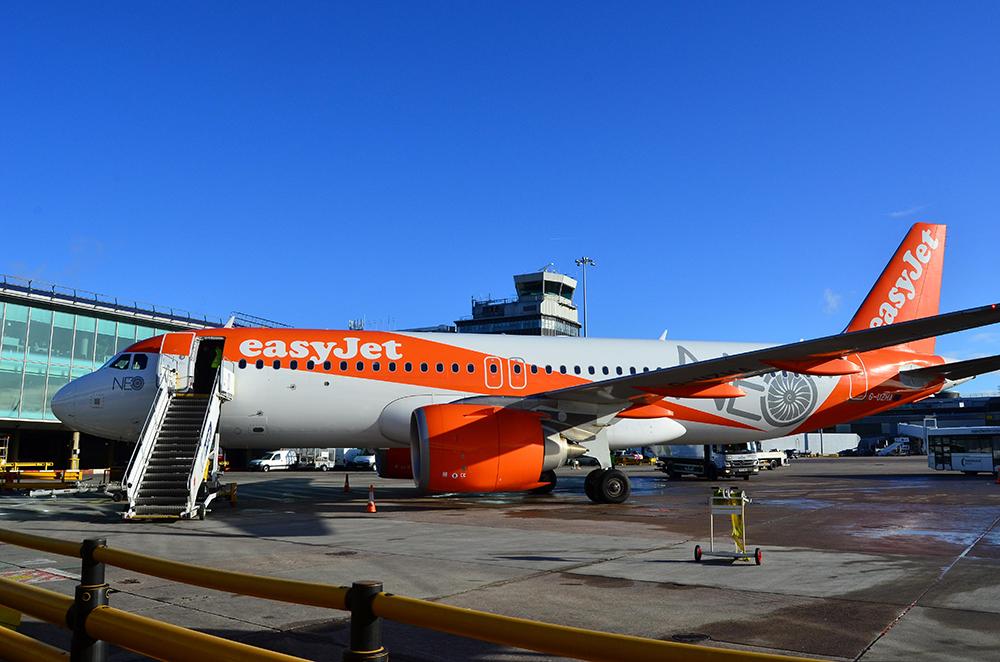
Europe’s mega-low-cost-carrier easyJet had no easy time during the COVID-19 pandemic. In addition to virus restrictions, the carrier’s UK-based operations were affected by Brexit, which limited flights even more. The airline had to shrink a bit, save cash vigorously, exploit labor-saving technologies and change some maintenance policies, according to Swaran Sidhu, head of fleet technical management.
The results are a somewhat different easyJet, many lessons learned and difficult experiences “you can tell your grandchildren about,” Sidhu explained to the audience of the final session of IATA’s Maintenance Cost Conference.
“There was lots of retrenchment and furloughs; many good people lost their jobs,” Sidhu said of the early pandemic days. The airline renegotiated its delivery schedule with Airbus, renegotiated supply agreements and scrambled to conduct a surge in lease-end activities, all to preserve cash.
Flying first recovered in late summer 2020, dipped with renewed lockdowns in autumn, then increased again in 2021. By summer 2021, easyJet flights under its Austrian and Swiss air operator certificates were back to pre-COVID-19 levels, but UK-based flights are still lagging at 80% of pre-pandemic levels due to Brexit.
Leases not renewed and aircraft not taken have left easyJet with a fleet of 324 aircraft, down from 342 before the crisis. Most of its Airbus A319s exited as easyJet pursued fuel efficiency.
Line maintenance activity tracked flights: down drastically, up, down again and now mostly recovered.
Light base maintenance, the equalized MRO program that uses eight-hour overnight checks at five stations, was fairly stable with some dips.
EasyJet rested some older tail numbers to delay heavy checks and save cash in 2020. But heavy checks increased in fall 2020 as the carrier elected to use aircraft downtime to perform deferred modifications.
Throughout the pandemic, easyJet has pursued cash preservation strategies. For engines, the airline contracted for the least engine work scopes allowable under lease return agreements. Normally, easyJet bought new life-limited parts (LLP), even buying ahead of time if prices were right. Now, it has started tapping used LLP markets. “We started robbing parts from parked engines,” Sidhu noted.
Redundancies and layoffs meant fewer people were available, even as lease-end activities ramped up. “We delayed heavy maintenance visits where we could,” Sidhu said.
The airline renegotiated supply chain contracts and renegotiated the minimum flight hours in its flight-hour maintenance contacts. It consolidated aircraft parking in its five maintenance locations where parking fees were lower and MRO was available.
Sidhu next chose a new record management system with more automation so fewer staff would be required to manage the huge increases in lease-end burdens.
The airline reviewed C checks to optimize them. End of lease work was cleared by individual task reviews.
Despite—or maybe because of—the MRO changes, key performance indicators have steadily improved. Aircraft availability has mostly run above 98.7% for seven months now, and technical dispatch reliability has been well above 99.29% for the last year.
The new normal for easyJet consists of hybrid work, partly at home and partly in offices. Individual desks are no longer assigned in office buildings, which have been reduced from four to two in number. “Some people have to be here five to seven days a week,” Sidhu noted. “For example, [maintenance operations control] shifts work all the time.”
EasyJet spent a lot of time on training and development during the pandemic, opting not to pay for outside trainers, but instead doing its own internal training with an online training academy. The tool was used to retrain furloughed workers and to train employees that needed to learn new skills.
Sidhu looked deeply at easyJet’s in- and out-sourcing policies. He brought inside some line and heavy maintenance tasks. EasyJet is now in the process of building a hangar at one of its previously outsourced MRO stations.
“We looked at data and technology and how we use it,” says Sidhu. EasyJet shifted from Skype to Microsoft Teams, Google Meet and Zoom. The airline also upgraded its planning tool, Aerogility. Staff learned about more Swiss-AS AMOS software modules and began working with these. EasyJet is also moving into Airbus’s Skywise Core, looking at health monitoring and moving toward predictive maintenance.
The airline used organizational restructuring to manage the reduction in staff, with more responsibilities assigned to some employees.
It also learned how to deal with long-parked aircraft. In pre-pandemic winters, aircraft were parked for five to seven days. This winter they will be parked for much longer periods.
Bio-security measures have changed, both on aircraft and in hangars. “We are still encouraging people to wear masks, wash their hands and not come into work if they feel unwell,” Sidhu said.
The airline reviewed its basic maintenance policies and decided to stick with equalized overnight checks through the sixth year for each aircraft and then move to block checks. Sidhu says there are only slight cost differences between the two approaches. Equalized overnight checks increase availability, but there is too much cabin and defect work to use them beyond six years.
Sidhu urged MRO managers to document the steps they took during this crisis, just in case a similar one occurs in the future.





